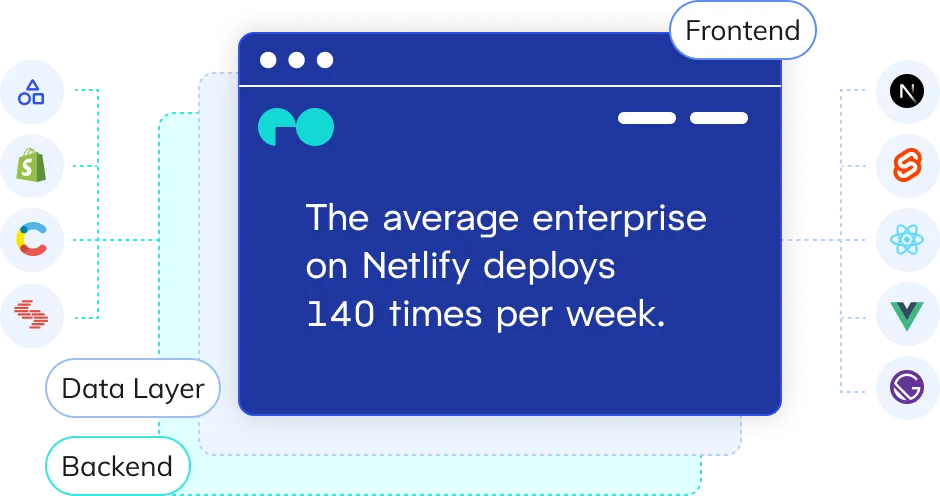The effects of streamlined orchestration go beyond the web team
Non-technical team members can make website updates and content changes in real-time, without developer oversight or navigating a never-ending ticket vortex.
Netlify Composable Web Platform








The Netlify Composable Web Platform simplifies content orchestration, streamlines and unifies developer workflow, and enables website speed and agility for Enterprise teams.
Built for Architects, Developers, and Marketers, the Netlify Composable Web Platform is supported by the world-class Netlify Partner Ecosystem, Enterprise services, and Enterprise-grade security to provide your teams with a single solution to manage any web stack.
Partner Ecosystem
Enterprise Services
Scalability
Security
Services


Non-technical team members can make website updates and content changes in real-time, without developer oversight or navigating a never-ending ticket vortex.

Netlify facilitates the combination of a decoupled web stack (frontend, backend, and data layer) in a single workflow, unlocking speed to innovation to build and deploy websites faster than ever.
Deploy websites in seconds with fully managed, multi-cloud infrastructure and no manual configurations to reduce
Build and test new websites and applications with a fully managed CI/CD and no configuration testing in a single workflow
Unify all content into a single, cached location and consolidate APIs to serve website visitors and customers faster
Bring teams together in a single platform that increases organizational transparency, efficiency and leads to better engagement, teamwork, and business outcomes
Empower all teams to make no-code visual editing changes to webpage or applications in seconds
Faster Project Deliveries
Better Performance
Reduction In Developer Hours
Reduction in bandwidth consumption
Cost savings








99.99%
Uptime SLA
24×7×365
Technical Support
GDPR
Compliance
SOC 2
Type 2 Certified
ISO 27001
Certificate
As we navigate the complexities and rapid pace of change in the digital world, the path forward becomes increasingly clear: the future is composable. For our clients, the Netlify Composable Web Platform is not merely a tool; it’s a solution that addresses the real-world challenges they face to innovate and meet customer demand.
“...the Netlify Composable Web Platform is not merely a tool; it’s a solution that addresses the real-world challenges they face to innovate and meet customer demand.”